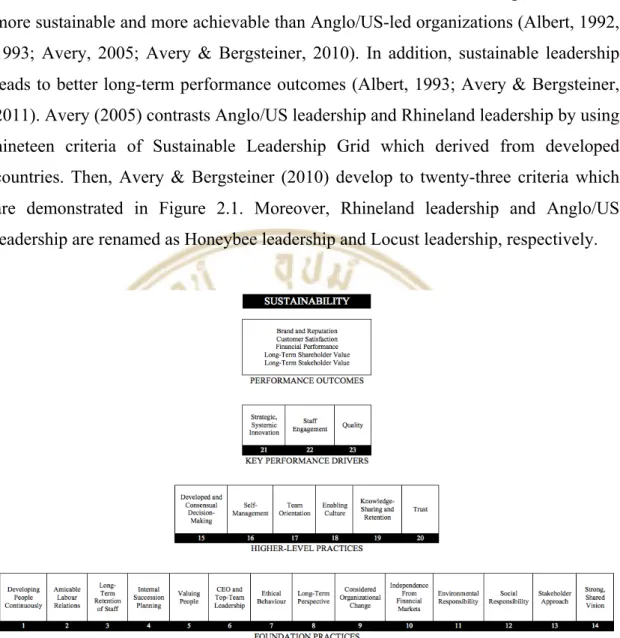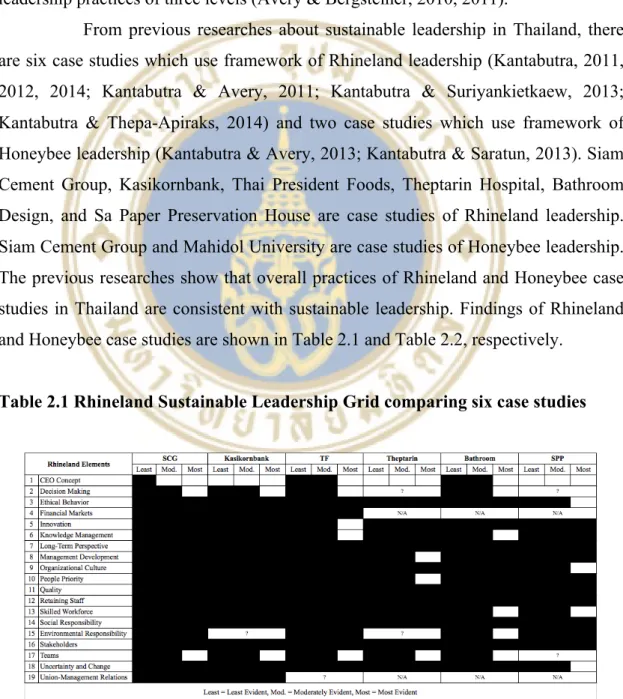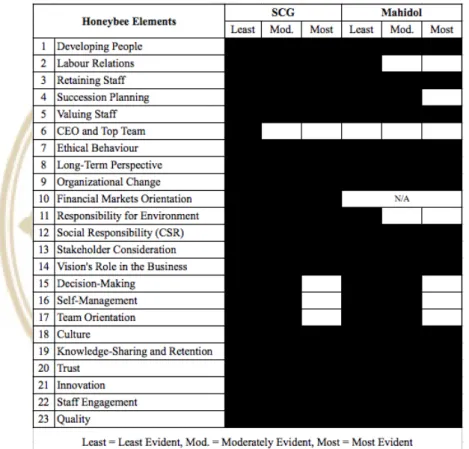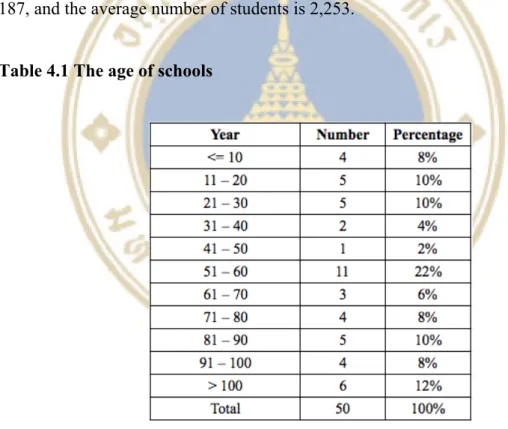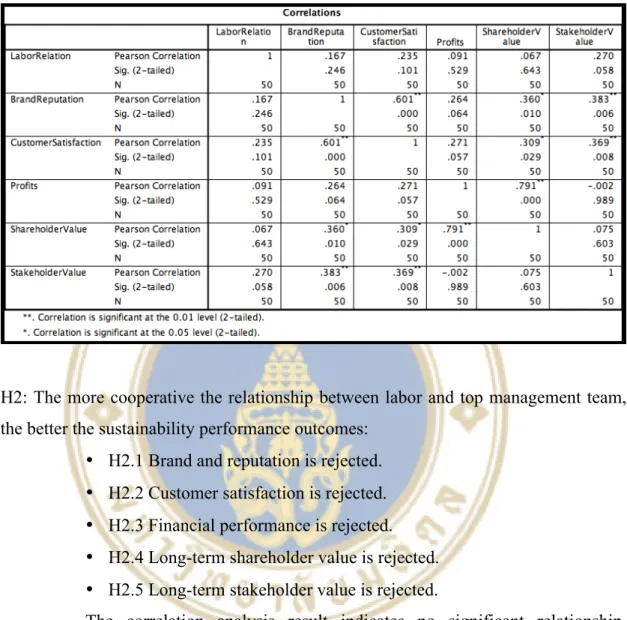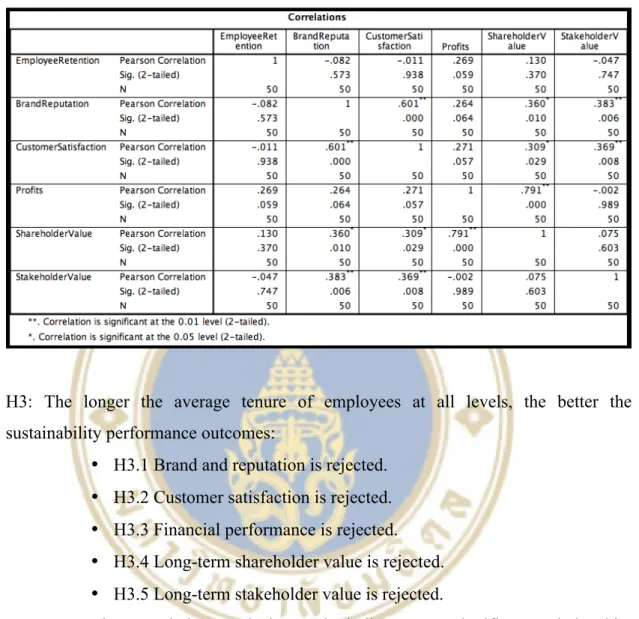The purpose of this study is to examine sustainable leadership in Thailand's secondary education sector. Managerial implications to enhance the perspective of sustainable leadership for the secondary education sector are also discussed. In addition, research shows that educational governance needs consistent leadership for high performance outcomes (Metsamuuronen, Kuosa, & Laukkanen, 2013).
Moreover, sustainable leadership leads to better long-term performance outcomes (Albert, 1993; Avery & Bergsteiner, 2011). Here, the twenty-three Honeybee leadership practices from three levels influence performance outcomes called Sustainable Leadership Pyramid as shown in Figure 2.1 (Avery & Bergsteiner. The previous research shows that overall practices of Rhineland and Honeybee case studies in Thailand are consistent with sustainable leadership .
Overall, the Rhineland Sustainable Leadership Grid of six case studies shows the similarities that their long-term perspective, quality, staff retention, social responsibility and stakeholder practices are completely in line with Rhineland management practices. Nevertheless, these previous case studies from Rheinland and Honeybee show that sustainable management practices and the practices of Thai organizations fit closely. Therefore, this evidence suggests that sustainable management can be applied to ensure corporate sustainability in Thailand.
As sustainable leadership has gained support in Thailand as an approach to ensuring corporate sustainability and little quantitative research has been conducted on organizations in the secondary education sector, this study uses Honeybee leadership as a framework to explore the relationship between practices of organizations in the secondary examine education. sector and their sustainability performance outcomes.

METHODOLOGY
From the hypotheses, a model of hypothetical correlations between twenty-three Honeybee management practices and five performance outcomes is developed, which is shown in Figure 3.1. A questionnaire was adapted from hypotheses about correlations between Honeybee management practices and performance outcomes. Practices are identified within; however, they can be characterized as principles, attitudes or perspectives.
The hypotheses will be tested in the secondary education sector because it is a very important sector. The education sector is one of the world's leading sectors with a multi-trillion dollar valuation (Everett, Johnson, & Madden, 2007). Furthermore, research shows that educational governance needs consistent leadership for high performance outcomes (Metsamuuronen, Kuosa, & Laukkanen, 2013).
Leadership in the secondary education sector plays a major role in organizational success and leaders should focus more on different stakeholders (Ghailani & Khan, 2004). Also, the quality of secondary education directly affects the quality of higher education (Michaelowa, 2007). Moreover, secondary education plays a major role in shaping human capital for the economy and the nation (Ghailani & Khan, 2004).
All findings from the secondary education sector of this study are shown in the next chapter.
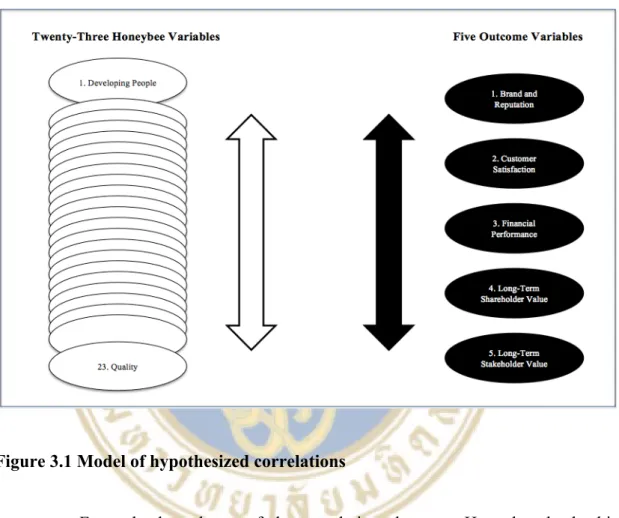
FINDINGS
The result of the correlation analysis indicates one significant relationship between ethical behavior and long-term stakeholder value. The result of the correlation analysis indicates two significant relationships between culture and customer satisfaction: long-term shareholder value.
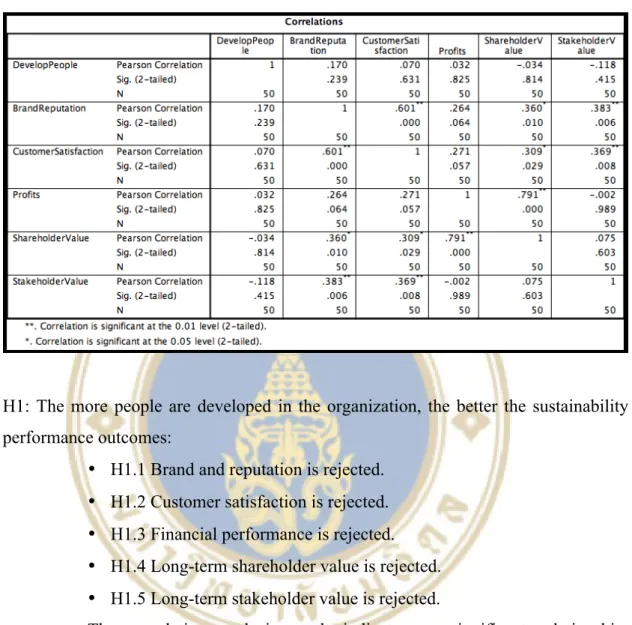
DISCUSSION
Discussion of the Findings
So when the shared culture of high schools increases, so does their customer satisfaction and long-term shareholder value. This may refer to secondary schools generally sharing and maintaining knowledge within organizations. All staff and teachers can learn in many areas and have a wide range of skills.
When all employees and teachers are well equipped with knowledge and skills, they can do their jobs and teach the students better. Then the parents are happy and willing to send their children to attend the schools. So when knowledge sharing and retention of the secondary schools increases, so does their customer satisfaction and financial performance.
This may refer to the secondary schools having strategic innovation in their services and processes. Sixth, quality has significant relationships with brand and reputation, financial performance, long-term shareholder value, and long-term stakeholder value. This may refer that the secondary schools mainly consider the quality of their study programs and teachers for the long term.
They invest in everything to maintain and increase their quality regularly because these days there are highly competitions in the secondary education sector. When the schools have high quality of their study programs and teachers, they can create brand and reputation. High quality of their study programs and teachers can also influence to the benefits of the stakeholders; for example the benefits of the students and the teachers.
Research shows that educational management needs sustainable leadership for high results (Metsamuuronen, Kuosa, & Laukkanen, 2013); however, school owners are not looking for their own benefits. When schools make a profit, they use it to invest in their buildings, infrastructure, education systems, etc. For future research, a qualitative approach is needed for Honeybee management to find more information and details in this sector of secondary education.
Managerial Implications
On the other hand, there are seventeen of Honeybee leadership's twenty-three sustainable leadership practices that do not have a significant relationship with any sustainability performance outcome. The main reason may stem from the fact that the education sector does not directly pursue profits. In addition, future research could extend to a primary education sector and a higher education sector.
In terms of culture, secondary schools must build a family culture, teamwork and an atmosphere of trust that ensures that all employees and teachers are willing to work together and for the organizations. To share and retain knowledge, secondary schools should have a number of projects and activities that allow all departments to work together and all staff and teachers to share their knowledge and skills. In addition, high schools should have a number of computer systems that can track and share knowledge throughout the organization.
For innovation, secondary schools must support and reward innovative ideas coming from all staff and teachers all the time. For quality, secondary schools should focus on this as a top priority, because quality has maximum significant relationships with four sustainability performance outcomes. Therefore, secondary schools must update programs of high study standards and the quality of teachers.
Second, in addition to focusing on six sustainable leadership practices from Honeybee leadership that have significant relationships with sustainability performance outcomes, high schools can adopt all twenty-three sustainable leadership practices from Honeybee leadership. For example, they can start from the lowest level of practices to the highest level of practices, which are foundational practices, higher level practices, and key performance drivers. Moreover, the private secondary schools and their owners need to support and support the long-term managerial implications to improve their sustainable leadership.
CONCLUSION
APPENDICES


